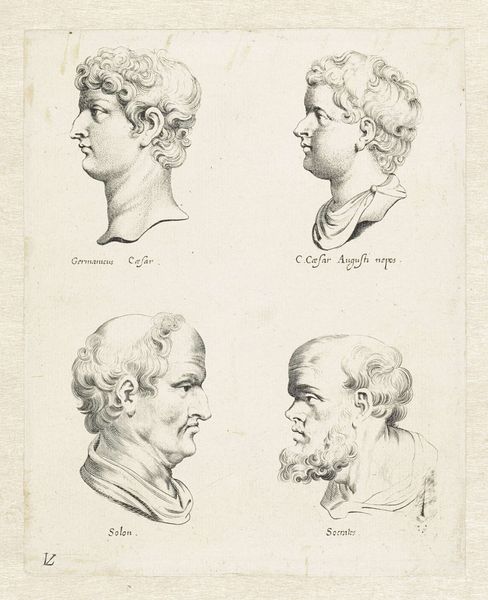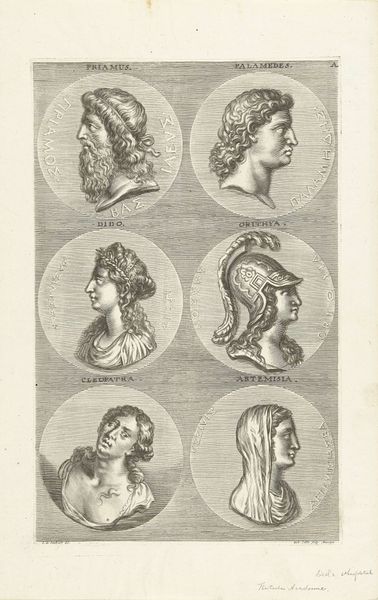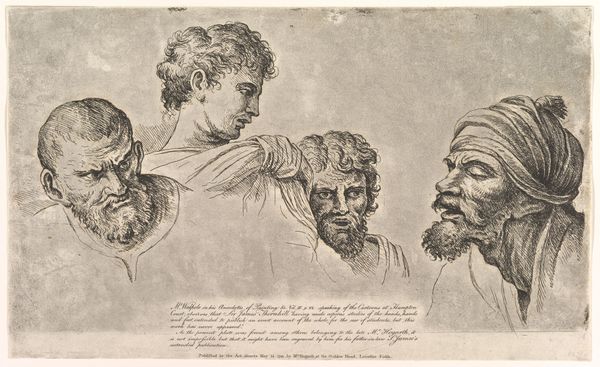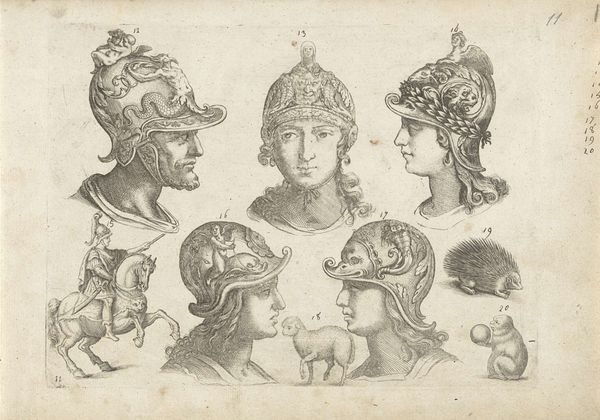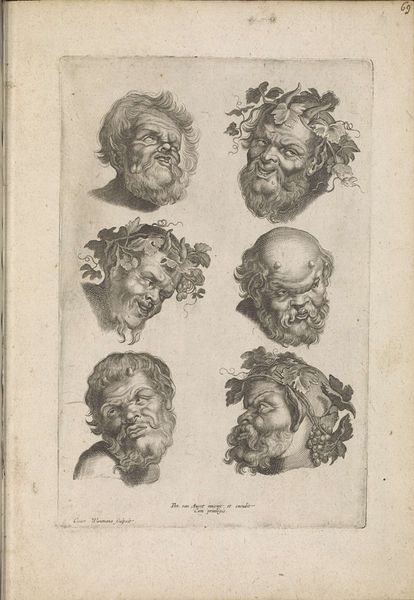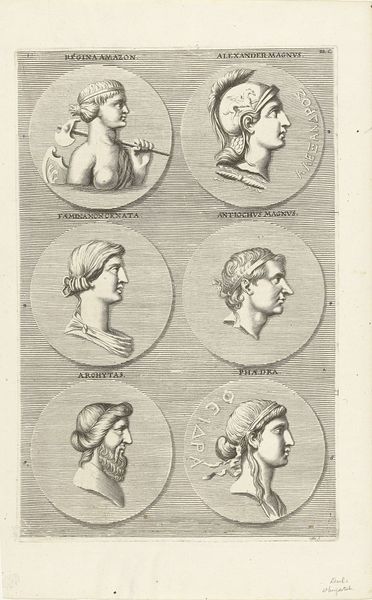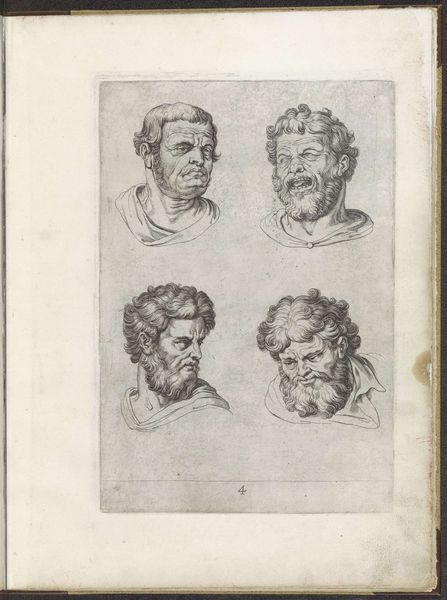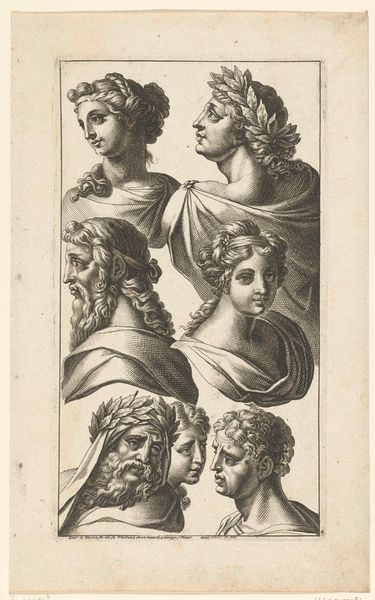
print, engraving
#
portrait
#
baroque
# print
#
classical-realism
#
figuration
#
ancient-mediterranean
#
line
#
portrait drawing
#
history-painting
#
engraving
Dimensions: height 145 mm, width 103 mm
Copyright: Rijks Museum: Open Domain
Editor: This print, "Vier antieke profielen," from circa 1635-1640, attributed to Lucas Vorsterman I, presents us with four profile portraits. The style feels both classical and a little dreamlike, almost like cameos brought to life. How should we interpret this array of historical figures? Curator: It's crucial to understand that this work exists within a historical context deeply invested in antiquity. These are not just portraits; they are carefully selected profiles intended to evoke specific virtues and histories tied to Classical idealism. Who were these figures meant to represent, and what public image was being cultivated by their presence? Editor: Well, they are labelled as Plato, Nicias, Pallas, and Alex Magnus, so, prominent figures of the ancient world, each seemingly embodying distinct aspects of leadership or wisdom. Pallas is presented with Pegasus on her helmet, associating her with inspiration. I imagine there were many ways of interpreting such references? Curator: Exactly! Think about the act of choosing *these* figures, these profiles, at this specific historical moment. What political or philosophical points might the artist, or patron, be making through their arrangement and presentation? Were they commenting on contemporary leadership or simply reinforcing established hierarchies of power? How were the prints of Vorsterman I displayed? How were these images circulated, and to what audiences? Editor: It makes you consider how images are used to promote particular values and forms of governance. And how consistent those uses have remained over time. Curator: Indeed, considering Vorsterman's choices gives us a window into the enduring power of historical figures and symbols. We have learned how representations, such as these portraits, operate in service to particular interests and power structures.
Comments
No comments
Be the first to comment and join the conversation on the ultimate creative platform.
